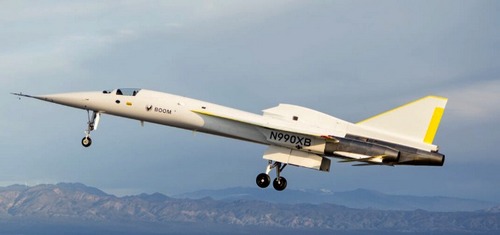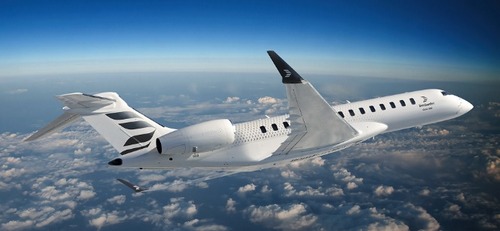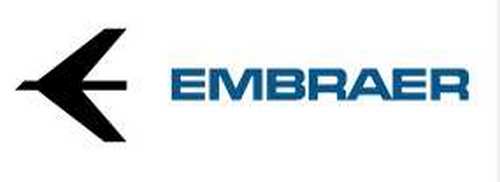

























Airlines, Airports and Airliners 2 MAY 2024
Google Banner Ad
This Week in Airliner, Airports and Airlines
FAA requires aviation organizations to detect, address safety risks early.
Pakistan and Bangladesh blocking over $720m of airline revenues.
FAA finalizes rule to reduce carbon particle emissions from aircraft engines.
Boom Supersonic announces successful Flight of XB-1 demonstrator aircraft.
Bombardier unveils bold new brand identity worldwide as company soars toward an ambitious future.
Gulfstream begins G700 customer deliveries.
Embraer backlog reached the highest level over past 7 years and deliveries increased 67% in 1Q24.
TSA officers intercept sixth gun so far this month at Reagan National.
Accidents and Incidents
Bonus Video - Pyramid Air Park Fly in.


Airlines, Airports and Airliners News
FAA REQUIRES AVIATION ORGANIZATIONS TO DETECT, ADDRESS SAFETY RISKS EARLY
The Federal Aviation Administration (FAA) is issuing new requirements for charter airlines, commuter airlines, air tour operators, and certain aircraft manufacturers to implement a Safety Management System (SMS).

The FAA's final rule mandates that these organizations develop a SMS within one to three years, depending on the operation. The FAA has required U.S. airlines to have SMS since 2018, and some manufacturers already developed and implemented SMS, which the FAA accepted.
"Requiring more aviation organizations to implement a proactive approach to managing safety will prevent accidents and save lives," FAA Administrator Mike Whitaker said.
The rule also requires those who have an SMS to share hazard information with other aviation organizations so they can work collaboratively to identify and address potential safety issues.
The final rule goes beyond the requirements of the Aircraft Certification, Safety and Accountability Act of 2020, which directed the FAA to mandate SMS only for aircraft manufacturers. The rule also addresses recommendations from the National Transportation Safety Board and independent review panels.

The International Air Transport Association (IATA) called on Pakistan and Bangladesh to immediately release airline revenues that are being held in contravention of international agreements. The situation has become severe with airlines unable to repatriate over $720 million ($399 million in Pakistan and $323 million in Bangladesh) of revenues earned in these markets.
"The timely repatriation of revenues to their home countries is critical for payment of dollar denominated expenses such as lease agreements, spare parts, overflight fees, and fuel. Delaying repatriation contravenes international obligations written into bilateral agreements and increases exchange rate risks for airlines. Pakistan and Bangladesh must release the more than $720 million that they are blocking with immediate effect so that airlines can continue to efficiently provide the air connectivity on which both these economies rely," said Philip Goh, IATA's Regional Vice President for Asia-Pacific.

Bangladesh has more standardized processes, but aviation needs a higher priority from the Central Bank to facilitate access to foreign exchange.
"We recognize that governments have a difficult challenge in how foreign currencies are used strategically. Airlines operate on razor-thin margins. They need to prioritize the markets they serve based on the confidence they have in being able to pay their expenses with revenues that are remitted in a timely and efficient fashion. Reduced air connectivity limits the potential for economic growth, foreign investment, and exports. With such large sums of money involved in both markets, urgent solutions are needed," said Goh.

"This first-of-its-kind rule in the United States will reduce the environmental impact of civil aviation on our health and climate," said Laurence Wildgoose, assistant administrator for the FAA's Office of Policy, International Affairs and Environment.

Engine manufacturers will have new emissions standards to follow to reduce harmful effects to health and the environment. This new rule gives manufacturers certainty about nvPM emissions criteria that they can use in developing the next generation of aircraft engines.
This action is part of the U.S. Aviation Climate Action Plan†that sets out to achieve net-zero greenhouse gas emissions from the U.S. aviation sector by 2050.†Find more information about the FAA and its environmental efforts at its†Sustainability Gateway Page.


Boom Supersonic, the company building the world's fastest airliner, Overture, today recently the successful flight of XB-1, the world's first independently developed supersonic jet, at the Mojave Air & Space Port in Mojave, California. Like Overture, XB-1 leverages state-of-the-art technologies to enable efficient supersonic flight including carbon fibre composites, advanced avionics, digitally-optimized aerodynamics, and an advanced supersonic propulsion system.
XB-1 was flown by Boom Chief Test Pilot Bill "Doc" Shoemaker, and Test Pilot Tristan "Geppetto" Brandenburg flew the T-38 chase aircraft which monitored the flight. XB-1 took off from the Mojave Air & Space Port and flew in the same airspace that hosted many historic first flights, including the flights of the Bell X-1, the North American X-15, and the Lockheed SR-71 Blackbird. XB-1 met all of its test objectives, including safely and successfully achieving an altitude of 7,120 feet and speeds up to 238 knots (273 mph).

Two decades after Concorde's retirement, the first flight of XB-1 marks the return of a civil supersonic aircraft to the skies and paves the way for the revival of mainstream supersonic travel. The XB-1 program provides the foundation for the design and development of Overture, while establishing a safety-first culture in engineering and manufacturing. XB-1 validates key technologies and innovations, including:
Augmented reality vision system: Two nose-mounted cameras, digitally augmented with attitude and flight path indications, feed a high-resolution pilot display enabling excellent runway visibility. This system enables improved aerodynamic efficiency without the weight and complexity of a movable nose.
Digitally-optimized aerodynamics: Engineers used computational fluid dynamics simulations to explore thousands of designs for XB-1. The result is an optimized design that combines safe and stable operation at take off and landing with efficiency at supersonic speeds.
Carbon fiber composites: XB-1 is almost entirely made from carbon fiber composite materials, enabling it to realize a sophisticated aerodynamic design in a strong, lightweight structure.
Supersonic intakes: XB-1's engine intakes slow supersonic air to subsonic speeds, efficiently converting kinetic energy into pressure energy, allowing conventional jet engines to power XB-1 from take-off through supersonic flight.
The inaugural flight of the XB-1 demonstrator takes place as Overture continues to advance toward production, with a growing global network of Tier 1 suppliers and an order book including 130 orders and pre-orders from American Airlines, United Airlines, and Japan Airlines. Overture will carry 64-80 passengers at Mach 1.7, about twice the speed of today's subsonic airliners. Optimized for speed, safety, and sustainability, Overture is designed to run on up to 100% sustainable aviation fuel (SAF).


BOMBARDIER UNVEILS BOLD NEW BRAND IDENTITY WORLDWIDE AS COMPANY SOARS TOWARD AN AMBITIOUS FUTURE

The new Bombardier logo celebrates the company's successful shift toward building, designing, servicing and modifying the world's best jets. The symbol itself, the Bombardier Mach, features the silhouette of an aircraft breaking the sound barrier-an ode to the ambition and innovative spirit of Bombardier's talented people-while the strokes of wind over an aircraft reference the company's deeply rooted heritage and the Learjet brand's storied winglet iconography.

Gulfstream Aerospace Corp. today announced the commencement of customer deliveries for the all-new Gulfstream G700. The first two G700 aircraft have been delivered and are now in service with Gulfstream customers.
"Beginning G700 customer deliveries less than one month after achieving Federal Aviation Administration type certification marks an incredible milestone in Gulfstream's history of raising the bar for the business aviation industry," said Mark Burns, president, Gulfstream. "We appreciate the confidence our customers have demonstrated in our aircraft and look forward to continuing these deliveries in the weeks ahead."

"We are excited for our customers to experience the unparalleled G700 as we continue to deliver this exceptional aircraft around the world," said Burns.

EMBRAER BACKLOG REACHED THE HIGHEST LEVEL OVER PAST 7 YEARS AND DELIVERIES INCREASED 67% IN 1Q24
Embraer (NYSE: ERJ; B3: EMBR3) delivered 25 jets in 1Q24, an increase of 67% compared to the 15 aircraft delivered in 1Q23. Executive Aviation showed robust delivery growth, soaring from 8 to 18 jets during the period. The number of deliveries was the highest 1Q of the last 8 years, and more than doubled YoY. Meanwhile, for Commercial Aviation, deliveries were flat YoY at 7 aircraft.
Embraer delivered 12% of the total number of aircraft implied by the mid-point of the current year guidance for both Executive and Commercial Aviation (25 out of 206). The company has developed, and it is currently implementing, a plan to mitigate its business seasonality. The Production Levelling plan main objective is to have a stable production pace throughout the calendar year in the near to medium-term future.
The company's backlog increased US$2.4 billion or 13% sequentially to US$21.1 billion in 1Q24, compared to a total backlog of US$18.7 billion in 4Q23. The biggest increase happened in Commercial Aviation (US$2.3 billion or 26%) while the smallest one was in defence & Security (-US$0.1 billion or -4%).

In defence & Security, the first C-390 Millennium of the Hungarian Air Force successfully completed its maiden flight. The aircraft is now undergoing a mission systems integration test campaign, ahead of its entry into service. Another important milestone in the quarter was the first Embraer defence Day in the United States; an event during which the C-390 Millennium and the A-29 Super Tucano were showcased to government authorities, military officials, prospects, and partners at our facilities in Melbourne, Florida. The C-390 selection by some countries in the EMEA and APAC regions has not yet been incorporated into the backlog, which represents a significant source of upside potential for the coming quarters. The defence & Security backlog reached US$2.4 billion (-4% QoQ) in 1Q24.
Services & Support continues to be one of the main drivers of Embraer's growth through a combination of operational excellence, customer experience, and innovative solutions. The business unit backlog finished the period sequentially flat at US$ 3.1 billion in 1Q24.
Commercial Aviation posted a US$11.1 billion backlog, or US$2.3 billion higher than in 4Q23. The highlight of the quarter was the deal with American Airlines for 90 E175s, with purchase rights for another 43 additional jets, to meet domestic demand in the United States. Also, Embraer delivered one E195-E2 to Azorra, which will fly under the Royal Jordanian flag.


TSA OFFICERS INTERCEPT SIXTH GUN SO FAR THIS MONTH AT REAGAN NATIONAL
Transportation Security Administration (TSA) officers at Ronald Reagan Washington National Airport intercepted their sixth firearm at one of the airport checkpoints so far this month, the latest stopped on Tuesday, April 23. The 9mm handgun was loaded with 10 bullets.

The man told officials that he wanted to travel with the firearm for protection.
Guns are not permitted through the security checkpoint and the travellers face a stiff financial civil penalty from TSA. The penalty for carrying weapons can reach a maximum of $15,000.
"This individual did not learn his lesson the first time he carried his gun to a checkpoint and this second time could be costlier because his financial civil penalty may be significantly more for repeating his same mistake," said John Busch, TSA's Federal Security Director for the airport. "Under any circumstances it is unacceptable to bring a loaded gun to an airport checkpoint, but to do it twice is just plain irresponsible."



Nigeria, Abuja-Nnamdi Azikiwe International Airport: Dana Air flight 9J352, an MD-82, veered off the side of the runway at Lagos Airport. Photos from the scene show the aircraft in the grass to the left of the runway with the nose resting on the grass.
Venezuela. Caracas Simon Bolivar International Airport (CCS/SVMI): A Laser Airlines MD-82 was being pushed back from the gate at Caracas Simon Bolivar International Airport (CCS) when smoke was observed coming from the aircraft. An emergency evacuation was carried out.
USA, New York-JFK Airport: Finnair Flight AY10, an Airbus A330-302, diverted to New York-JFK Airport due to engine no.1 shut down in flight. The airplane safety landed at JFK at 07:06 UTC.
USA, John F. Kennedy International Airport (JFK/KJFK): Delta Airlines flight DL520, a Boeing 767-332ER, returned to John F. Kennedy International Airport (JFK/KJFK) after the in-flight loss of a right-hand side emergency slide.

Pyramid Air Park Fly in

Google Banner Ad
 |
 |
 Copyright © 2024 Pilot's Post PTY Ltd
The information, views and opinions by the authors contributing to Pilotís Post are not necessarily those of the editor or other writers at Pilotís Post.
Copyright © 2024 Pilot's Post PTY Ltd
The information, views and opinions by the authors contributing to Pilotís Post are not necessarily those of the editor or other writers at Pilotís Post.